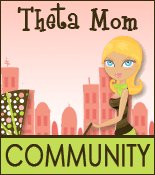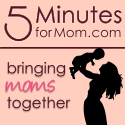 |
| Emily - African Elephant at Buttonwood Zoo |
Update: 6/2015: I discovered that due to an incident involving one of the zoos elephants, that Buttonwood Zoo was named one of the "Ten Worst Zoos For Elephants" by the animal rights organization In Defense of Animals.
From Wikipedia: On January 3, 2014, Asian elephant Ruth was found outside in subzero temperatures during a blizzard.[7] The zoo was cited and fined $777 by the U.S. Department of Agriculture under the Animal Welfare Act for failure to secure access.[8] Ruth subsequently suffered frostbite of her ears, tail and vulva. Portions of her ears fell off, and on November 5, 2014, approximately 10" of her tail was surgically removed.
This update saddens me, but I am hoping that this has improved conditions for elephants at the zoo, and that the following information is still helpful to parents seeking a small-size zoo for young children.
Here in Southeastern Massachusetts and Rhode Island, Roger Williams Zoo is a popular family destination, but its not always the best option for babies and toddlers for two reasons:
- Roger Williams is a huge zoo with many walking paths in the hot, blazing sun
- Animals in their natural habitat (ie. Giraffes in an African environment) can be too far away for baby to actually see them.
Here's why Buttonwood Park Zoo is one of my favorite places to take little ones:
-Children under 3 are free!
- Farm Animals! Pigs, sheep, horses, cows, chickens, roosters, and more are always a big hit with the under three crowd. At this smaller zoo, the animals are close enough to actually see and possibly touch.
-Less area to cover on the circular walking path, so toddlers can walk part of the way if they choose. You can visit this zoo for an hour or two in the AM to be home by nap time or in the afternoon to be back for dinner. You can also make a day out of it and take advantage of the attached park and playground.
-There are many covered areas along the zoo's walking path with park benches to take a break from the sun. Most days there is a beautiful breeze.
-Large indoor eating area with snack bar, plenty of tables, and air conditioning for warmer days. You are not required to purchase food to sit inside and eat your snacks.
- Playground just outside the zoo entrance with mature trees for shade and benches
-Very large green park for running, kicking a ball, flying a kite, or having a picnic.
The animal selection at Buttonwood Zoo might not be as exotic and numerous as those found at a larger zoo, but there are just enough of the right type of animals for this age group in a manageable size. Check out the Buttonwood Zoo website for more about their animals.
Bonus: Traveling on 195 East to Buttonwood Park Zoo in New Bedford can be a quicker, less stressful ride (especially for Bristol or Newport Country residents) than traveling through busy downtown Providence.
Additional Info:
- Click for Map and Directions
- Rental buggy/carriages available - call for pricing
- The Zoo is open daily from 10 AM to 5 PM, except Thanksgiving, Christmas and New Year’s Day. (Last entry is at 4:30 PM) Ticket Prices:
- Adults: $6
- Seniors & Teens: $4.50
- Child 3-12: $3.00
- Children under 3: Free
- Parking: Free
Group rates are available for groups of 10 or more with advanced registration. Call (508) 991-6178, ext. 31 for more information and to register.






























